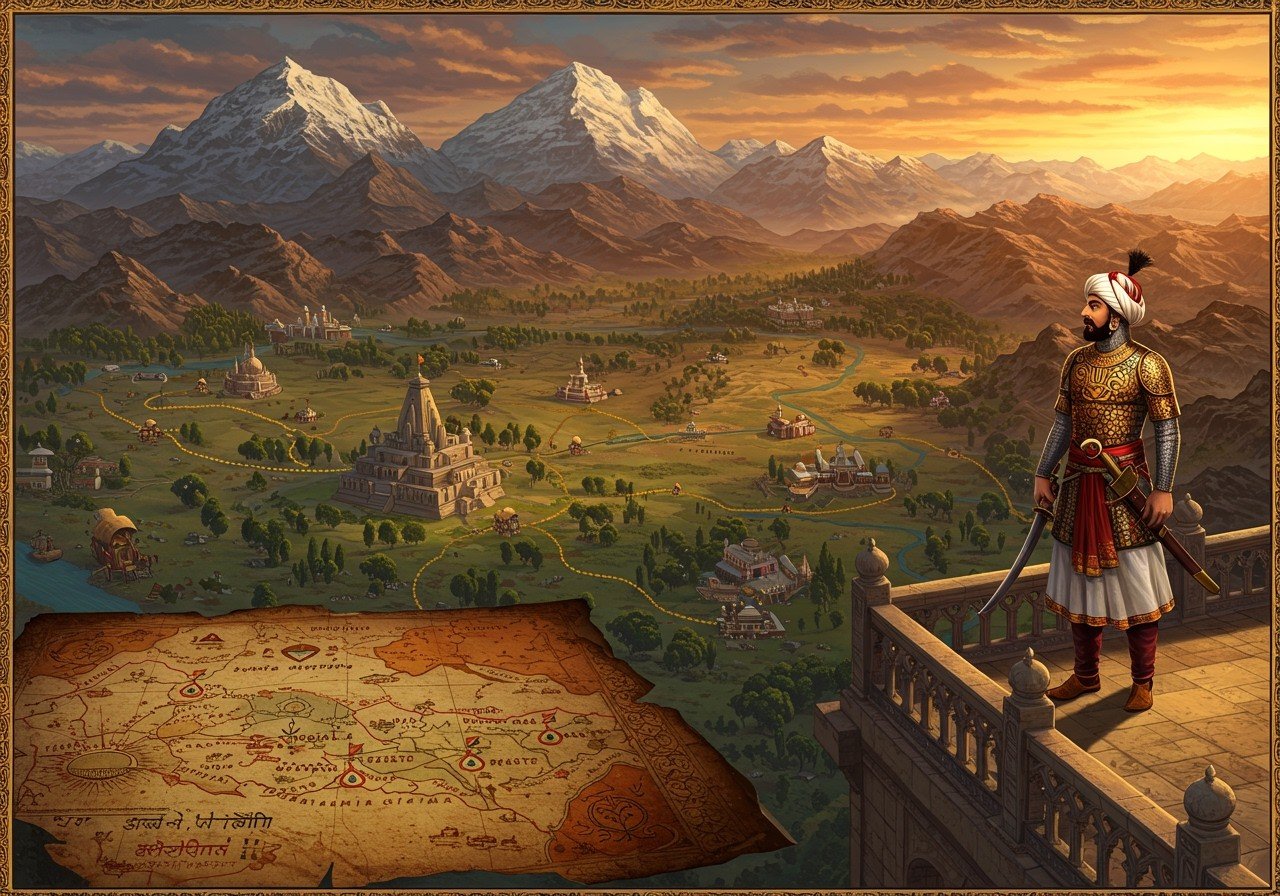
The Karkota dynasty, a powerful force in ancient India, reigned over the Kashmir valley and beyond from approximately 625 to 855 CE, leaving an indelible mark on the region’s history and culture. This article delves into the Karkota Empire’s historical and geographical boundaries, examining its expansion, influence, and enduring legacy. By exploring historical texts, maps, and archaeological findings, we aim to provide a comprehensive understanding of the empire’s territorial reach at its zenith.
Historical Background: Origins and Significance
The Karkota dynasty emerged around the 7th century CE, founded by Durlabhavardhana. This dynasty significantly shaped Indian history, particularly in the realms of art, architecture, and cultural development. Lalitaditya Muktapida, a prominent Karkota ruler, propelled the empire to its peak through strategic political and military endeavors. The Karkotas expanded their territories, implementing effective administrative systems and governance structures that fostered growth and stability. Their reign was marked by economic prosperity and the construction of numerous Vishnu shrines, showcasing their religious fervor.
Defining the Boundaries: Core Regions and Extensions
Historical accounts, including the Rajatarangini by Kalhana, offer valuable insights into the geographical extent of the Karkota Empire. While pinpointing precise boundaries remains a challenge due to variations in historical records, we can identify key regions under their control:
- Kashmir Valley: This served as the empire’s heartland, holding immense cultural significance. The valley’s fertile lands and strategic location contributed to the empire’s prosperity.
- Northern Boundaries: The empire extended into present-day Gilgit-Baltistan and regions within modern Pakistan. This expansion northwards brought the Karkotas into contact with various cultures and trade routes.
- Western Boundaries: These encompassed parts of Punjab and potentially extended into areas of present-day Afghanistan. This western reach suggests the Karkotas’ involvement in transregional interactions and trade networks.
- Eastern Boundaries: The empire stretched eastward, covering areas of present-day Himachal Pradesh and Uttarakhand. This expansion brought diverse landscapes and populations under Karkota rule.
- Southern Boundaries: These reached into northern India, possibly extending as far as the Gangetic plains. This southward expansion brought the Karkotas into contact with the heartland of ancient Indian civilization.
The Karkota Empire at Its Peak: Lalitaditya’s Reign (c. 724-760 CE)
Under Lalitaditya Muktapida’s rule, the Karkota Empire reached its apex. His military campaigns expanded the empire’s influence into Central Asia, Tibet, and across northern India, as documented in sources like the historical atlas published by the University of Chicago Press. This era witnessed remarkable cultural and economic flourishing. Historical texts depict the splendor of the Karkota court and its impact on neighboring regions. Lalitaditya’s patronage led to the creation of architectural marvels like the Martand Sun Temple, a testament to the empire’s cultural achievements.
Karkota Dynasty Map: Understanding Historical Cartography
Historical cartography plays a vital role in understanding ancient empires. Reconstructed maps of the Karkota Empire, based on historical texts and archaeological evidence, offer glimpses into its geopolitical landscape. These maps highlight key cities, regions, and the empire’s boundaries, stretching from Kabul in the west to Arunachal Pradesh in the east. While creating accurate historical maps presents challenges due to data limitations, comparing the Karkota Empire map with those of contemporary dynasties provides valuable context.
Cultural and Social Influence: Art, Religion, and Education
The Karkota Empire significantly influenced the cultural landscape of ancient India. The rulers were patrons of art, literature, and architecture. Magnificent temples, such as the Martand Sun Temple, stand as testaments to their architectural prowess. The construction of several Vishnu shrines highlights their religious inclinations. Both Shaivism and Buddhism thrived under their rule, reflecting a degree of religious tolerance and harmony. The Karkotas actively promoted education and scholarship, fostering a rich intellectual tradition. Their support for Sanskrit literature and historiography led to the creation of significant literary works that continue to be studied today.
Conclusion
The Karkota Empire’s legacy is profound and far-reaching. Their patronage of art and literature, promotion of religious harmony, and support for education left an enduring impact on Indian history. Exploring the rich heritage of the Karkota dynasty provides valuable insights into the cultural development of ancient India. The legacy of the Karkota rulers continues to inspire and serves as a reminder of the importance of preserving and valuing our traditions and heritage.
Poojn.in: Connecting You to India’s Rich Cultural Heritage
Poojn.in, India’s leading provider of spiritual and cultural goods, offers a wide array of products to support your exploration of historical and religious traditions, including those of the Karkota era. As you delve deeper into the Karkota Empire’s history and its cultural impact, consider enhancing your understanding with these offerings:
- Traditional Puja Items: Prepare for meaningful visits to regional temples with authentic puja items sourced from across India. Explore our collection of high-quality puja essentials.
- Copper and Brass Items: Discover handcrafted copper and brass items that reflect the artistry of ancient craftsmanship, reminiscent of the Karkota period. Browse our selection of exquisite metalware.
- Ritual Materials for Kashmir Shaivism: Delve into the spiritual practices of Kashmir Shaivism with authentic ritual materials, connecting you to the region’s rich religious heritage. Find the perfect items for your spiritual journey.
Contact our expert team at 91 7908548235 for personalized guidance on selecting the right products for your needs. Visit www.poojn.in to explore our complete range of traditional and ritual items.


